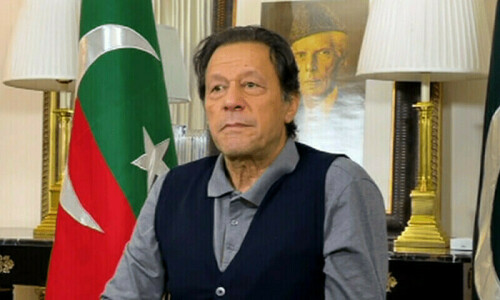MUMBAI, Nov 30: The militants waited in the shadows for the police van to pass and when it slowed down in the narrow road, they sprayed it with gunfire.
They opened the doors and dumped five slumped officers’ bodies into the streets, then piled into the van. What they did not know was that two officers, including constable Arun Jadhav, were in the backseat, alive.
Jadhav was then taken on a chilling 10-minute ride through the dark streets of Mumbai with two of the gunmen who had launched a siege that would last for 60 more hours and leave at least 174 people dead.
While one of the men drove the van, another pointed his rifle out of the window and fired on a crowd milling outside a cinema. Later, he threw a grenade outside a state government building.
The young gunmen said little during the harrowing drive, but spoke Hindi with a strong Punjabi, north-Indian accent.
They scoffed when they saw that the police officers they had killed had been wearing bulletproof vests.
“One of them laughed and said, ‘Look, they’re wearing jackets’,” Jadhav said.
He was in the back seat, with an officer who was unconscious, both left for dead. Jadhav had been hit by three bullets, two of which left his hands nearly paralysed.
At one point, a cellphone trilled from the pocket of Jadhav’s colleague. The gunman in the front seat turned around and fired.
“He didn’t even look back properly, he just fired,” Jadhav said. “I think my colleague had been still alive. He died with those bullets.”
Before the ‘carjacking’, Jadhav and his colleagues — including Hemant Karkare, head of the Anti-Terror Squad — were racing to respond to emergency calls of a shooting inside Mumbai’s main railway station, the attack that began the siege.
Then a report came in that a car was seen speeding away from the terminal, and Jadhav’s van rushed to follow it.
While they were searching for the gunmen, the gunmen found them.
From his seat, Jadhav could not reach his weapon. “I kept trying to lift my gun, but I couldn’t reach it,” he said.
Finally, one of the van’s tyres went flat, and the gunmen abandoned the vehicle. They stopped another car, pulled out the driver and drove away, he said.
Jadhav climbed forward and used the police radio to call for backup and tell the authorities what direction the gunmen had gone.
Minutes later, a team of officers blockaded a road lining the coast, and opened fire at the hijacked car. One gunman was killed and another arrested — the only militant to be captured during the entire two-and-a-half day ordeal.
Jadhav is now recuperating from his injuries at a city hospital, and replaying the episode again and again in his mind. “I wish I could have lifted my gun,” he said.
Only ten men
It took just 10 young men armed with rifles and grenades to terrorise Mumbai — a city of 18 million — and turn its icons into battlefields until security forces ended one of the deadliest attacks in India’s history.
The bloody rampage carried out at 10 sites across the city killed at least 174 people and wounded 239.
Among the dead were 18 foreigners, including six Americans. Nine attackers were killed. And at least 20 members of the security forces died.—AP













































Dear visitor, the comments section is undergoing an overhaul and will return soon.